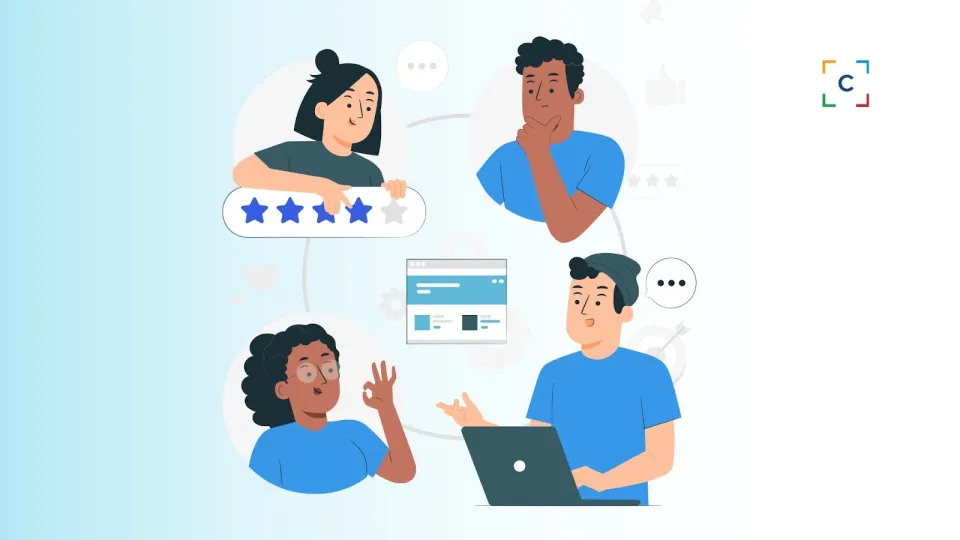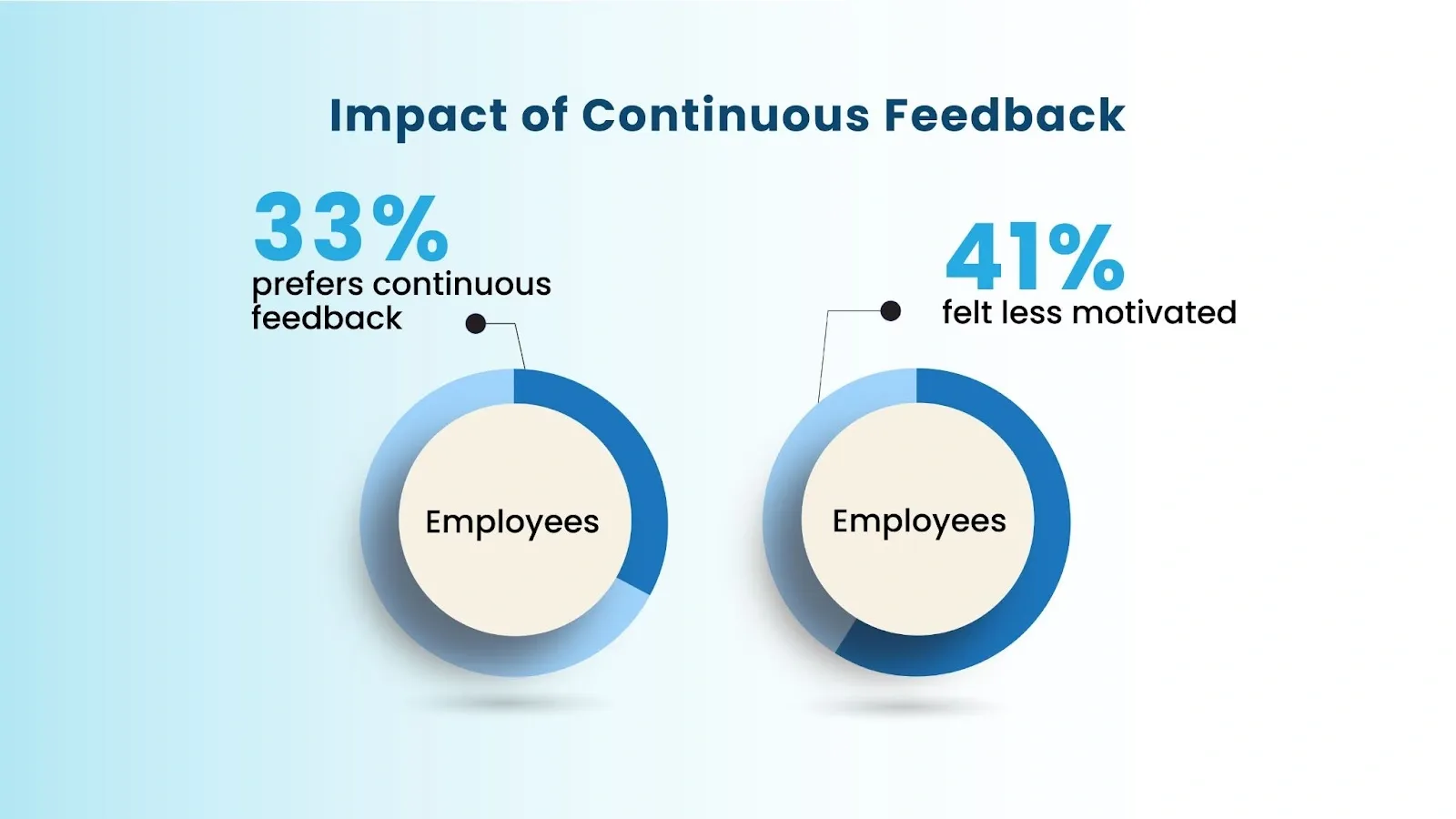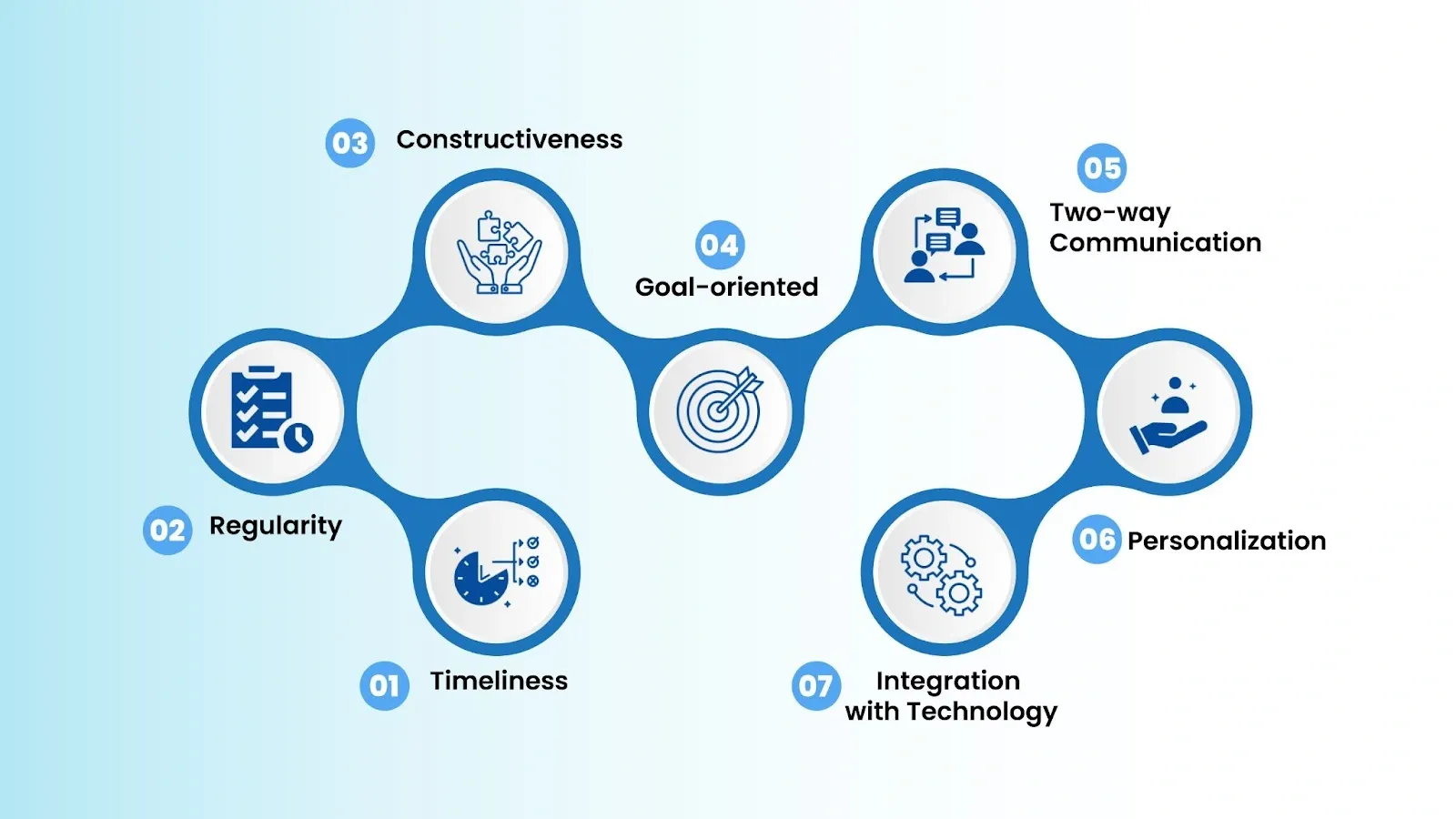How Continuous Feedback in Your Work Environment Can Elevate Your Credibility

Boosting your professional credibility at work is all about blending your personal qualities, professional skills, and consistent actions that truly showcase your integrity and expertise. It includes factors such as:
- Expertise and Competence
- Consistency
- Integrity
- Professionalism
- Conceptual Skills
- Accountability
- Leadership Qualities
- Visibility and Networking
- Feedback Reception and Adaptability
- Helpfulness and Collaboration
Yet, one often overlooked yet essential factor is feedback reception and adaptability. Even with strong communication skills, it’s crucial to distinguish between merely understanding constructive feedback from your superiors and responding positively to it.
Let’s understand this with an example: Imagine you are a team lead, and your boss gives you negative feedback for your team’s presentation. Although it might not be your fault, as a team lead, it will automatically fall under your responsibility, and you will become accountable for it.
In this situation, reacting negatively towards your boss and team could create a wrong impression of your relationship with them, leading to a loss of trust in you. However, taking feedback as constructive advice can guide and motivate your team to not repeat the mistake and can win your boss’s appreciation. This approach not only potentially earns your boss’s appreciation but also builds trust between you, your team, and your superiors.
Such a positive and proactive response to feedback can significantly enhance your credibility in the workplace and contribute to a healthier work environment. This approach is not just about maintaining harmony; it's backed by data that highlight its effectiveness.

According to some sources:
- 33% of employees prefer to receive continuous feedback outside of traditional annual reviews.
- 41% of employees have resigned from a position due to feeling ignored.
And one of the reason, employers not engaging with employees properly or lacking in communication. This can be solved by listening to employees and providing them feedback on their work frequently.
In this blog, we will explore how continuous feedback in your work environment can elevate your credibility. Let’s begin with the basics.
Understanding Continuous Feedback
When we discuss performance management, it's clear that the shift is towards real-time interactions and continuous feedback. This shift is not just about employers providing employee feedback but about fostering a collaborative environment where both employers and employees contribute to the ongoing process of improvement.
Let's say you find yourself as a marketing executive, and you have been asked to run 10 ads within a week. You worked hard, did all calculations and speculations, and completed the task. But after a week, you get a report from your manager saying that the client wasn't happy with the results. After analyzing reports, you found that you have repeatedly targeted the wrong audience, leading to low engagement and poor performance.
If you had received feedback from your manager after the first ad, things would have been different. So, continuous feedback is an effective way to boost employees' performance and help them grow.
Key Characteristics of Continuous Feedback:

- Timeliness: Continuous feedback stands out for its immediacy. It's given right after specific behaviors are observed, making it directly relevant and actionable.
- Regularity: Rather than being confined to annual reviews, continuous feedback is an ongoing conversation throughout the year. This regularity gives employees a clear, continuous view of their performance, fostering consistent personal and professional growth.
- Constructiveness: Continuous feedback aims to guide individuals constructively towards better performance. It focuses on supportive comments that boost learning and confidence, not just criticism.
- Goal-oriented: This feedback is closely tied to clear, achievable goals, aligning individual efforts with the organization's broader objectives. This ensures that feedback not only promotes personal growth but also contributes significantly to team and company success.
- Two-way Communication: Continuous feedback encourages a dynamic exchange, inviting employees to share their thoughts and discuss their progress and career goals openly.
- Personalization: Thanks to its regular nature, continuous feedback can be tailored to the specific needs and situations of each team member. This personalized approach helps ensure that everyone feels supported and valued, boosting team morale and inclusivity.
- Integration with Technology: Many companies use digital tools to enhance the continuous feedback process. These technologies make it easier to track, organize, and analyze feedback, helping everyone make the most of the insights gained.
Difference between traditional annual reviews and continuous feedback methods
The difference between traditional annual reviews and continuous feedback methods lies primarily in their approach and frequency of interaction:
The Role of Continuous Feedback in Building Credibility
Continuous feedback is crucial in creating a work environment where trust and transparency are valued, greatly influencing workplace dynamics and employee satisfaction. Here's how it contributes effectively:
- Promotes Open Dialogue: Continuous feedback ensures regular communication between team members and managers. For example, a manager might provide immediate feedback after a presentation, offering both praise and constructive suggestions. This openness helps prevent misunderstandings and builds a work environment where employees feel valued and heard.
- Demystifies Performance Metrics: Continuous feedback helps employees understand what is expected of them and how their efforts align with the organization's goals by regularly discussing performance metrics and expectations. For instance, weekly check-ins with a sales team can clarify targets and strategies, making organizational objectives transparent and understandable.
- Builds Trust through Consistency: Regular and timely feedback establishes a reliable pattern that employees can trust. When managers consistently acknowledge both strengths and areas for improvement, it enhances security and trust within the team.
- Encourages Mutual Feedback: Continuous feedback also supports feedback flowing from employees to managers, fostering improvements in management practices and team support. For example, an employee might suggest that clearer project briefs would enhance performance, leading to adjustments that benefit the entire team.
- Enhances Problem-Solving: Immediate feedback helps identify and address issues promptly, keeping small problems from becoming larger. Quick resolution of challenges, such as arranging a training session when a team member struggles with new software, reinforces a culture of transparency and proactive problem-solving.
- Facilitates Personalized Development: Tailoring development plans to individual needs demonstrates a personal investment in employee growth. This personalized approach not only boosts individual performance but also shows a commitment to nurturing employee potential.
How getCREDIBLE Facilitates Continuous Feedback: Introduce getCREDIBLE
getCREDIBLE stands out as a leading online platform dedicated to boosting professional credibility. It equips users with a dynamic tool for crafting and managing digital resumes that prominently display their educational background, work experience, and significant accomplishments. A standout feature of getCREDIBLE is its capability to incorporate real-time updates and project milestones, allowing professionals to demonstrate their continuous growth and achievements within their respective industries.
The getCREDIBLE platform offers a range of features designed to support continuous feedback in the workplace, enhancing transparency and fostering a culture of continuous improvement. Here’s a brief overview of key features that facilitate this process:
- Real-Time Performance Tracking: getCREDIBLE provides tools for tracking employee performance against set objectives and milestones in real-time. This feature enables managers and team members to monitor progress continuously, identify areas of strength, and pinpoint where support might be needed. The immediacy of this data ensures that feedback is timely and relevant, promoting quick adjustments and ongoing development.
- Feedback Mechanisms: The platform incorporates user-friendly feedback mechanisms that facilitate easy communication between colleagues and supervisors. These tools are designed to encourage both positive reinforcement and constructive feedback, making it simple for users to provide and receive input regularly. This continuous flow of feedback helps maintain alignment with performance goals and fosters professional growth.
- Milestone setting and Adjustment Features: With getCREDIBLE, one can post the goals or accomplishments they have achieved as milestones on the platform. This feature encourages the individual to set clear goals and accomplishments so that they can be posted as milestones. When Achievements are representable in award form, they motivate people.
- Performance Reviews: While getCREDIBLE supports continuous feedback, it also integrates this with more structured performance reviews, allowing for a more comprehensive assessment over time. This combination ensures that while immediate feedback is provided, there is also an opportunity for deeper reflection and planning during periodic reviews.
- Dashboard and Analytics: The platform offers a dashboard with analytics features that provide insights into performance trends, feedback frequency, and areas requiring attention. These analytics help managers and employees alike understand performance patterns and make informed decisions about personal and team development strategies.
Conclusion
Continuous feedback is crucial in today's professional environment. Regular and timely feedback helps establish a culture of ongoing improvement, enhances communication, and ensures alignment with role expectations.
Continuous feedback highlights your strengths and areas for improvement, making sure they resonate with your position's requirements and contribute to your professional growth. Platforms like getCREDIBLE are essential for facilitating regular feedback, showcasing your progress, and ensuring that your development is visible and aligned with your organization's goals.
To leverage these innovative features and enhance your professional growth, consider registering with getCREDIBLE today.
Frequently Asked Questions
- Why is continuous feedback beneficial?
- It allows employees to receive feedback immediately, improve their performance, and avoid mistakes. It also helps employees understand their work and how to complete it effectively.
- How do you ask for continuous feedback?
- Be clear about what you want to learn from your feedback. Be open and honest when asking for feedback, and know when your manager or supervisor is available to talk with you.
